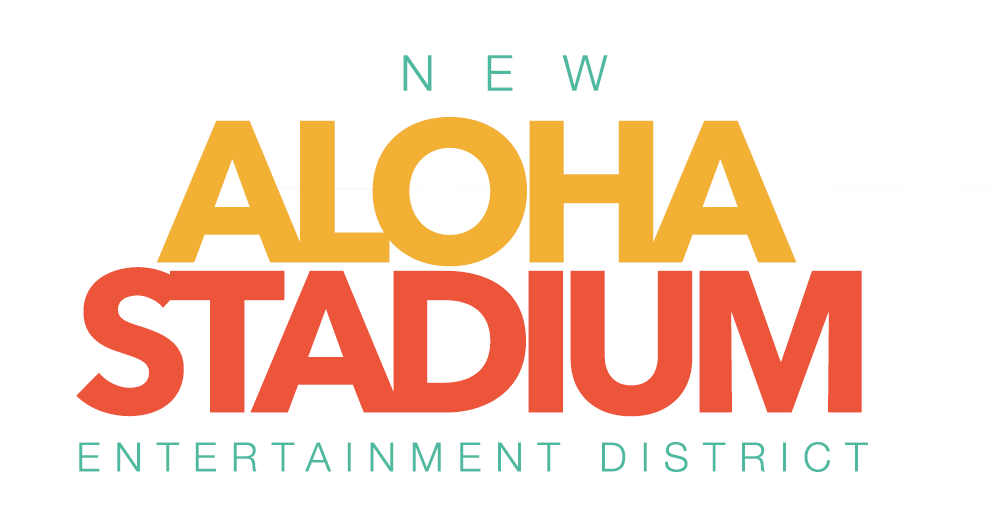Honolulu Star-Advertiser
September 11, 2019
Updated 6:33 p.m.
If a smart mixed-use vision for redevelopment of Aloha Stadium’s Halawa site gets a green light, construction could begin next fall. And three years later, University of Hawaii football fans could be seated in a new multipurpose facility for the 2023 season — the start of a whole lot more.
Momentum for creating a stadium entertainment district — complete with commercial and residential features as well as a rail station — picked up in July with Gov. David Ige signing off on legislation, Act 268, that appropriates $350 million for redevelopment through a combination of revenue bonds, general obligation bonds and general fund money while partnering with a private developer yet to be selected.
Last week, state officials released a report that maps out three preliminary site plans. Each sensibly calls for a downsized stadium of about 35,000 seats, from the current capacity of 50,000. These early designs vary on placement of the stadium, but each envisions staging sports, concerts and family-oriented events.
It’s encouraging to see ideas taking shape for the project’s 96-acre site, even though decisions are still a while away. In addition to weighing preliminary options of A, B and C, stakeholders and community members alike are urged to offer up alternative ideas on how to best transform the underutilized land.
Among stadium-centered ideas expected to generate debate: fan amenities, such as luxurious seating options; and design elements, such as roofing over seating areas and parking. Whatever the scope of roofing, it should be capped with solar panels; and the whole district should embrace an environmental sustainability focus.
The Stadium Authority, the management arm of the aging “Rust Palace,” has long been leading the charge to construct a new facility rather than opt for a pricey repair route.
Now, with ticket sales on a roll, the timing seems favorable for growing Aloha Stadium’s profile as a talent go-to. Last month’s sellout crowd at the preseason matchup between the Dallas Cowboys and Los Angeles Rams, along with Bruno Mars’ concerts last fall, rank among the biggest single revenue-producing events in the facility’s 44-year history.
Also spurring optimism for the site’s potential to become a lively and profitable hub is a Honolulu Authority for Rapid Transportation plan to see the first passenger-carrying rail trains zipping from East Kapolei to the stadium in late 2020.
The entertainment district’s overlap with transit-oriented development along the 20-mile rail line bolsters a compelling argument that a large portion of residential features should be reserved for much-needed affordable housing, tailored for tenants and buyers representing moderate- and low-income levels.
Kansas City, Mo.-based Crawford Architects, which has experience in stadium projects and “P3” public-private-partnerships, was tapped by the state to conduct an environmental impact statement (EIS) and master planning. Crawford has worked with the Minnesota Vikings on their facilities, and with NCAA Division 1 universities on stadiums.
Under Act 268, the Hawaii Community Development Authority, which also oversees Kakaako’s makeover as a work-live-play neighborhood, will serve as the P3 development arm. That seems a reasonable assignment, given the state agency’s know-how in public-private ventures, but decisions must favor public accessibility and local affordability.
The next nudge forward is an EIS scoping meeting at 7 p.m. Sept. 25 in the stadium’s hospitality room. Slated for completion by late July, the draft EIS will examine potential impacts on physical environment as well as less tangible matters, such as socioeconomic characteristics and cultural resources. For the public, the meeting is a good opportunity to jump into the conversation about the site’s future.
READ FULL ARTICLE HERE

